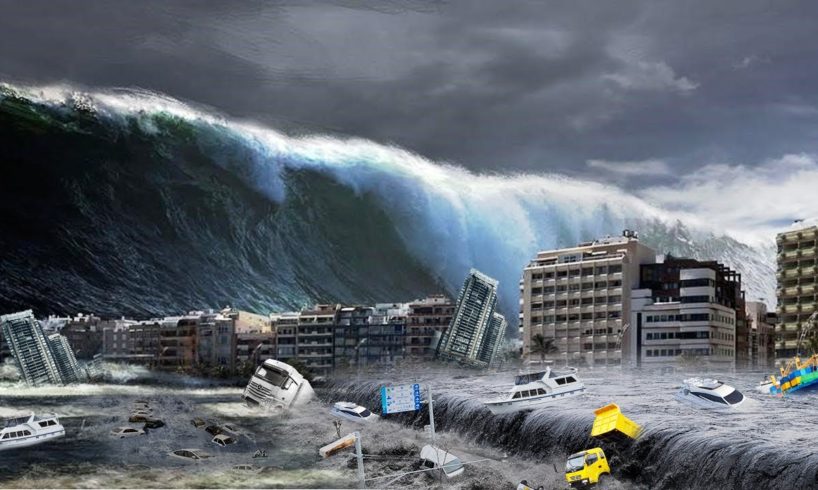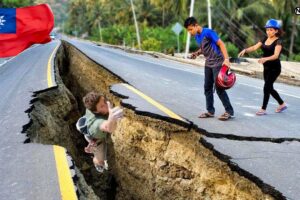
Number 1
Haiti tsunami
On Tuesday, January 12, 2010, at 16:53 local time, a powerful 7.0 Mw earthquake hit Haiti. The tsunami also reached Virgin Islands, Dominican Republic.
The devastating January 12 earthquake in Haiti also set off a swarm of unusual tsunamis, which killed three and destroyed several homes. Though surveying damage and rescuing survivors was of utmost priority for several weeks, scientists are now starting to examine some of the side effects of the temblor, such as the tsunamis.
The waves, which averaged about ten feet (three meters) high, slammed shores along the Bay of Port-au-Prince and the southern coast of the island of Hispaniola, which is shared by Haiti and the Dominican Republic. At least one wave hit the shore as far as 62 miles (100 kilometers) away from the earthquake’s epicenter, near Port-au-Prince, Haiti.
Tsunamis are rare though not unheard of in the Caribbean—a 1946 wave in the Dominican Republic killed nearly 2,000 people, said Hermann Fritz, a civil and coastal engineer who worked with a team from Haiti’s Quisqueya University to study the tsunamis.
Yet the Haiti tsunami swarm was unusual, since earthquakes usually need to be bigger than the recent magnitude 7.0 quake to spawn the killer waves, said Fritz, whose team will present its findings Wednesday at the American Geophysical Union’s Ocean Sciences Meeting in Portland, Oregon.
Number 2
Tōhoku Tsunami, Japan – March 11th, 2011
One of the worst tsunamis ever recorded struck the Japanese shoreline on March 11, 2011. The waves were about 500 miles per hour and measured at 32 feet (10 meters) in height. This massive tsunami was brought on by an earthquake that lasted six minutes. Common names for it include “Great East Japan Earthquake.” Since the beginning of modern record-keeping in the 1900s, it was the fourth-strongest earthquake ever to be recorded.
Sadly, the affected area’s people, who were largely in coastal towns, had terrifyingly little time to get out of the wave’s impact zone. Even though, areas used for evacuation were seriously impacted, and some of them were completely submerged. According to official reports, there were 19,747 deaths and 2,556 reported missing persons in 2021.
High waves induced by the earthquake and the ensuing tsunami led to the Fukushima Daiichi nuclear accident. Its three reactors all melted down, releasing radioactive discharge. This resulted in additional evacuations and had an impact on thousands of local the residents. Amounts lost as a result of the earthquake ranged from $14.5 to $34.6 billion. It is frequently regarded to be the historically most expensive natural disaster.
Number 3
Sumatra, Indonesia – 26 December 2004
The depth at which the 9.1-magnitude earthquake off the coast of Sumatra occurred was assessed to be 30 kilometers. The sea floor was vertically displaced along the 1300 km fault zone that generated the tsunami by several meters. As much as 50 meters tall, the ensuing tsunami reached 5 kilometers inland at Meubolah, Sumatra. With approximately 1,000 combined tide gauge and eyewitness measurements from throughout the world, including locations in the US, the UK, and Antarctica, this tsunami is also the most widely reported. The disaster is blamed for approximately $10 billion in damages and is thought to have killed about 230,000 people.
Number 4
Aleutian Tsunami 1946
In the Alaskan Aleutian Islands, an earthquake struck at 12:29 GMT on April 1, 1946. The earthquake, which had a surface wave magnitude of 7.8, an epicenter at 52.8° N, 163.5° W, and a focal depth of 25 km, caused a tsunami that affected the whole Pacific. More than 165 people lost their lives and more than $26 million (1946 USD) in damage were caused by the tsunami before it vanished.
On Unimak Island in Alaska, the recently constructed Scotch Cap Lighthouse was one of the buildings harmed by the tsunami. Five men lost their life at the lighthouse, and the run-up was 35.0 m. One of the areas where the tsunami was most devastating was the Hawaiian Islands. On the island of Hawaii, Pololu Valley recorded the highest run-up at 12.0 m. On the Island of Hawaii, Hilo was the city that suffered the most damage. The tsunami’s run-up was measured at 8.1 m, and it reached Hilo 4.9 hours after leaving the Aleutian Islands. 96 people died, and Hilo sustained damage of $26 million.
Number 5
Northern Chile – 13 August 1868
One of the most powerful earthquakes ever recorded: The Arica earthquake of 1868 was a mega quake that occurred on August 13, 1868, in the city of Arica, which is now in Chile but was then part of Peru. It had a Richter scale value of 9.0.
The 1868 earthquake was one of the strongest of the nineteenth century and one of the most violent to ever occur in Chile, a seismically active region. For the initial fault, a rupture that measured at least 600 km in length and 150 km in width was calculated.
#documentary #earthquakes #tsunami #hurricanes #news #mothernature #nature #disaster
source






